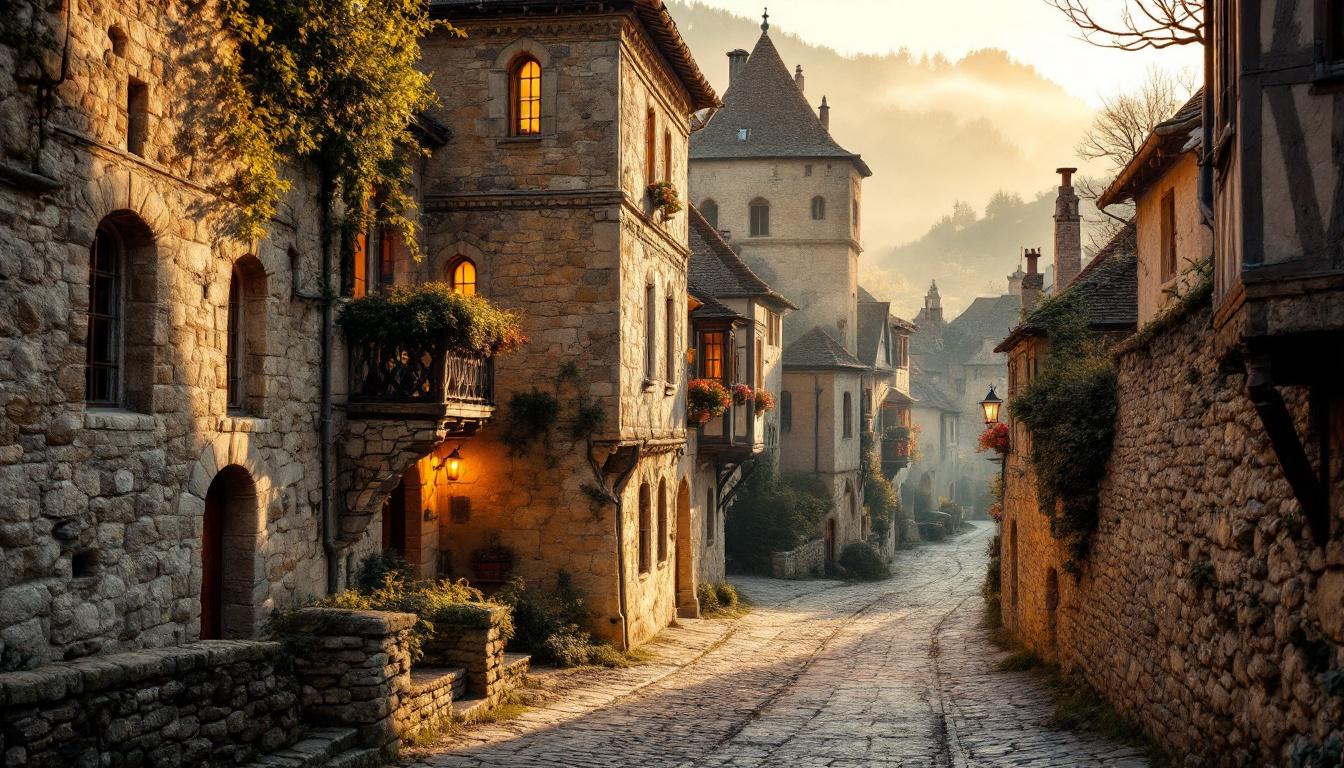In the rolling hills of Burgundy, where morning mist clings to ancient stone walls, Châteauneuf-en-Auxois sits like a forgotten jewel on its rocky outcrop. The village’s 86 residents have watched tour operators circle their medieval streets with growing concern, protective of something most travelers will never understand.
This isn’t just another picturesque French village. It’s a living medieval time capsule where artisans still practice ancient crafts in buildings older than most nations. The locals have seen what happened to Carcassonne and similar destinations, and they’re quietly determined to preserve what mass tourism destroys.
Walking these narrow cobblestone streets, you’ll notice the subtle ways residents guard their sanctuary. No tour bus parking. No souvenir shops hawking plastic trinkets. Just authentic medieval life continuing as it has for eight centuries.
Why local artisans protect their medieval sanctuary
The artisan community’s quiet resistance
In converted medieval workshops, local artists create wooden sculptures and castle-inspired jewelry that tell stories of their heritage. These aren’t tourist trinkets mass-produced elsewhere. Each piece reflects generations of craftsmanship passed down through families who’ve called these ancient stones home for decades.
Preserving authentic medieval rhythms
The village operates on rhythms unchanged since the 12th century. Morning light still illuminates the same stone facades that housed medieval merchants. Local cafés serve Burgundy specialties in buildings where knights once gathered. This isn’t historical recreation – it’s living history the residents actively protect.
What makes this village too precious for mass tourism
The fragile scale of authentic medieval life
With just 86 residents spread across narrow medieval streets, Châteauneuf-en-Auxois exists in delicate balance. The population density that makes it magical – neighbors greeting each other by name, artisans working in medieval guild tradition – would shatter under tourist bus pressure.
Architecture that can’t handle crowds
The village’s 12th to 17th-century buildings weren’t designed for modern tourism volumes. Stone stairways worn smooth by centuries of footsteps, narrow doorways built for medieval proportions, and ancient foundations that support the château’s rocky perch all require careful preservation that massive crowds would compromise.
The cultural treasures locals want to preserve
Medieval fortress secrets beyond guidebook knowledge
The château holds stories locals share only with respectful visitors. Tales of Isabelle de Chaudenay’s tragic fate, hidden passages used during medieval sieges, and architectural details that reveal Burgundian military engineering secrets. These narratives disappear when destinations become photo opportunities rather than cultural encounters.
Traditional craft techniques under threat
Local artisans practice woodworking and metalwork techniques inherited from medieval guild masters. Their workshops, nestled in buildings with original shop windows from the post-medieval period, represent living heritage. Mass tourism transforms these sacred spaces into mere attractions, disrupting the quiet concentration traditional crafts require.
How to visit respectfully like locals prefer
Supporting the artisan economy authentically
Purchase directly from local artists working in their medieval studios. These transactions aren’t just commerce – they’re cultural exchanges that help sustain traditional crafts. Engage artisans about their techniques, learn the stories behind their work, and understand how your purchase supports authentic medieval craft preservation.
Experiencing medieval rhythms without disruption
Visit during quieter seasons when the village reveals its true character. Stay overnight at the Hostellerie du Château to experience medieval mornings when mist rises from the Auxois countryside. Walk the ramparts at dawn when locals tend their gardens, and you’ll understand why residents protect this extraordinary place.
Planning your visit to this protected medieval sanctuary
When locals welcome respectful visitors most
Late spring through early autumn offers the best balance of pleasant weather and authentic village life. Avoid peak summer crowds by visiting in May or September when residents are most relaxed about sharing their cultural treasures with genuinely interested travelers.
What locals hope visitors will understand
This isn’t entertainment – it’s a living medieval community. Respect the quiet dignity of ancient streets, support local artisans meaningfully, and help preserve what makes Châteauneuf-en-Auxois extraordinary. The residents’ protective attitudes ensure future generations can experience authentic medieval France as it was meant to be.
How many people typically visit daily?
During peak season, the village receives approximately 200-300 day visitors, mostly arriving by car or river cruise. This careful balance maintains the authentic medieval atmosphere residents work to preserve.
What’s the best way to support local artisans?
Purchase directly from workshops, engage artists about their traditional techniques, and commission custom pieces that reflect your cultural experience rather than buying mass-produced souvenirs.
Are there restrictions on photography in the village?
While photography is generally permitted, residents appreciate visitors who focus on architecture rather than people and avoid disrupting artisans at work in their medieval workshops.
Châteauneuf-en-Auxois represents everything authentic about medieval France that residents rightfully protect from tourist commercialization. By visiting respectfully and supporting traditional artisans, you become part of preserving this extraordinary cultural sanctuary for future generations to discover.
